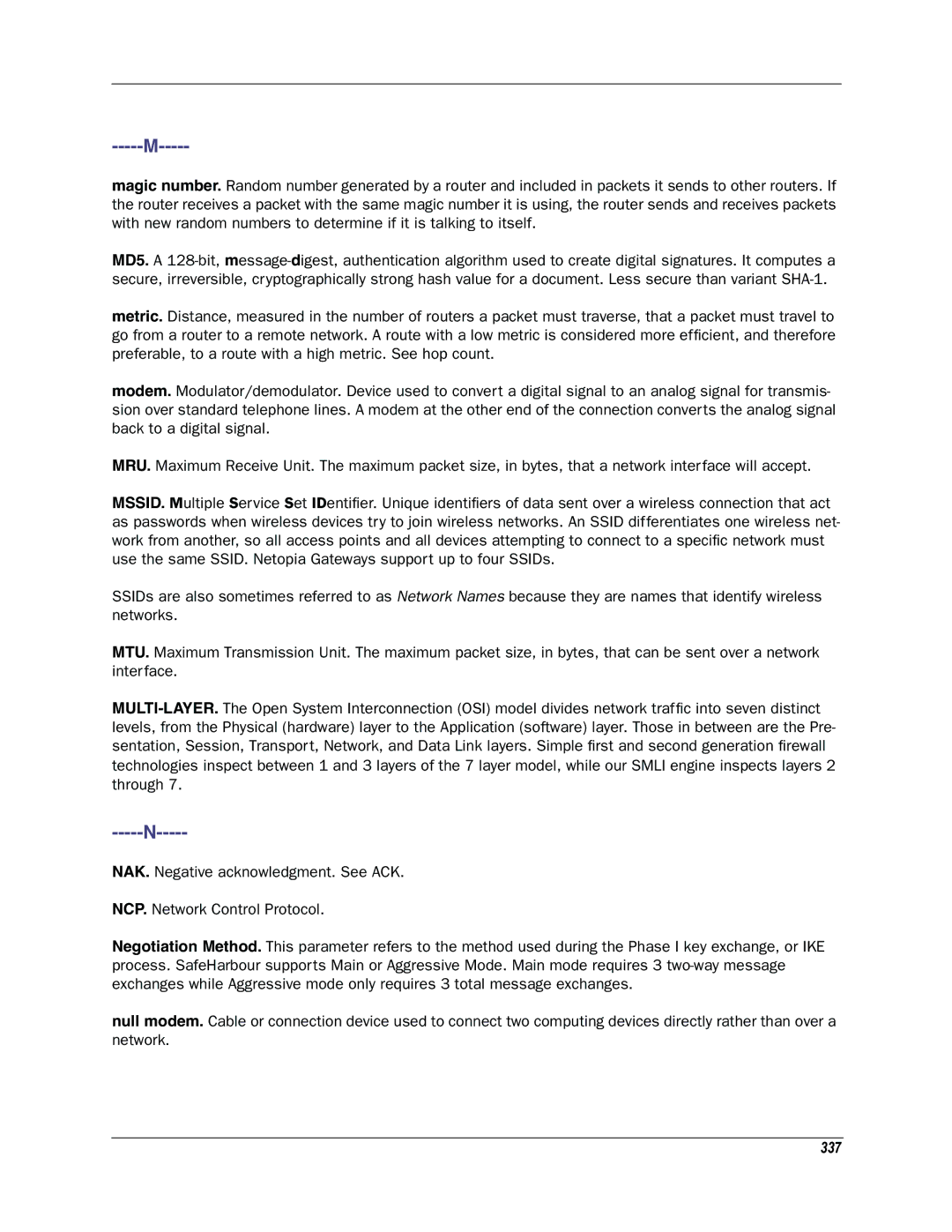
magic number. Random number generated by a router and included in packets it sends to other routers. If the router receives a packet with the same magic number it is using, the router sends and receives packets with new random numbers to determine if it is talking to itself.
MD5. A
metric. Distance, measured in the number of routers a packet must traverse, that a packet must travel to go from a router to a remote network. A route with a low metric is considered more efficient, and therefore preferable, to a route with a high metric. See hop count.
modem. Modulator/demodulator. Device used to convert a digital signal to an analog signal for transmis- sion over standard telephone lines. A modem at the other end of the connection converts the analog signal back to a digital signal.
MRU. Maximum Receive Unit. The maximum packet size, in bytes, that a network interface will accept.
MSSID. Multiple Service Set IDentifier. Unique identifiers of data sent over a wireless connection that act as passwords when wireless devices try to join wireless networks. An SSID differentiates one wireless net- work from another, so all access points and all devices attempting to connect to a specific network must use the same SSID. Netopia Gateways support up to four SSIDs.
SSIDs are also sometimes referred to as Network Names because they are names that identify wireless networks.
MTU. Maximum Transmission Unit. The maximum packet size, in bytes, that can be sent over a network interface.
NAK. Negative acknowledgment. See ACK.
NCP. Network Control Protocol.
Negotiation Method. This parameter refers to the method used during the Phase I key exchange, or IKE process. SafeHarbour supports Main or Aggressive Mode. Main mode requires 3
null modem. Cable or connection device used to connect two computing devices directly rather than over a network.
